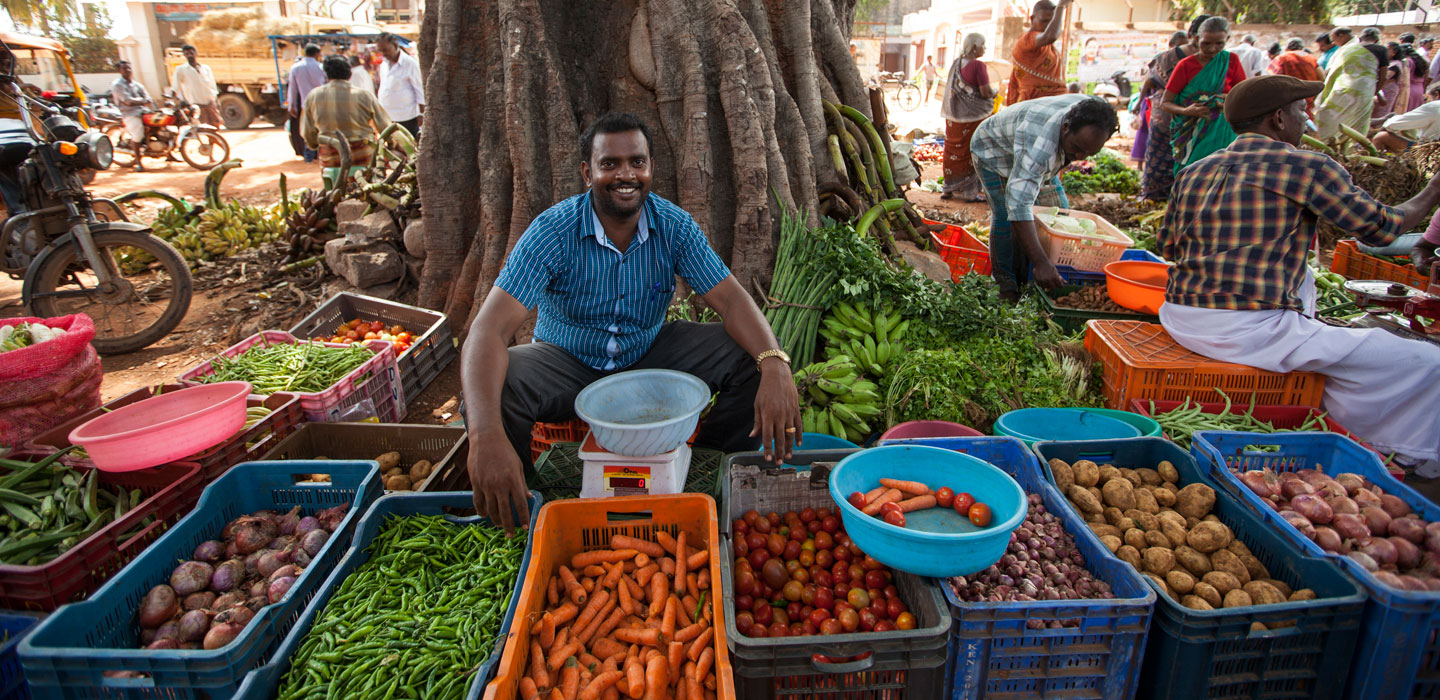When they came home: Migration and responses to COVID-19 in India
IFAD Asset Request Portlet
Asset Publisher
When they came home: Migration and responses to COVID-19 in India
Estimated reading time: 4 minutes
©IFAD/Susan Beccio
With most of the world sheltering in place due to the COVID-19 pandemic, the International Labour Organization estimates that about 2.7 billion people – 81 per cent of the global workforce – are currently affected by full or partial workplace closures. Governments are racing to mitigate the resulting economic pain, which threatens to push 49 million people worldwide into extreme poverty and exacerbate global hunger. Workers in the informal sector are the hardest hit, and migrants are especially vulnerable. Thirty per cent of India’s 450 million migrants work in the informal sector, and they are no exception.
When the Government of India announced a national lockdown, many migrant workers decided to travel back to their homes, struck by uncertainty and confusion as their incomes dwindled. They hoped that back in their home villages, they would have access to regular meals, agricultural income and social protection programmes, while saving on expenses like monthly rent. Apart from sparking concerns that the pathogen would spread to India’s rural areas, this sudden exodus from the cities also created a different emergency – one in which all levels of government had to scramble to safely and humanely isolate both returning and stranded migrants.
Even as shelter homes and relief camps were set up to support the nearly 10 million migrants stranded across the country, many of them did manage to return to their villages – yet many communities were not entirely prepared to receive them. This is where local community institutions have come to the fore. From tackling the fear of infection among locals and balancing public health needs with the understandable desire of family members to be together, to working with local administrations to set up comfortable – and COVID-19–compliant – boarding and lodging arrangements for returnee migrants, local community institutions have played a crucial role in shaping the pandemic response at the last mile.
Stories of how these institutions, built by and for the poor, have stepped up to serve returnee migrants in distress are filtering in from all across India. In some of the most remote parts of the country, where IFAD works with the government to improve rural lives and livelihoods, this support has not been limited to one activity.
In Jharkhand, for instance, the self-help groups (SHGs) formed as part of the IFAD-supported Jharkhand Tribal Empowerment and Livelihoods Project have been working with gram panchayats (village-level elected governments) to prepare quarantine centres, as is the case in neighbouring Odisha. Also in Odisha, project staff and beneficiaries are providing cooked meals to vulnerable populations, such as pregnant women, the poor and migrants under quarantine. In Maharashtra, the SHGs affiliated with Mahila Arthik Vikas Mahamandal, IFAD’s implementing partner for the Tejaswini project, are supporting the state government’s Shiv bhojan thali scheme to provide pre-cooked meals to migrants and daily wage earners in need. In Nagaland, beneficiaries and lead farmers of another IFAD-supported project, FOCUS, are setting up community kitchens. Meanwhile, the livelihood collectives in Uttarakhand (part of the Integrated Livelihoods Support Project) are not just cooking for migrants – they are also assessing their needs and helping them access various government schemes. This includes collecting daily essentials from their members and distributing them to migrants in need, a practice also seen in Odisha.
These institutions are also raising awareness through information and education campaigns. For instance, community resource persons engaged by an IFAD-supported project in Odisha have been instrumental in spreading awareness on health, sanitation and social distancing, in close collaboration with public health workers. Jharkhand’s community resource persons are also using an app developed by the project to map the risk of COVID-19 at the village level, particularly in villages with greater numbers of returnee migrants. The app is available in five districts across the state.
Though these responses have shown how local community institutions can successfully address the immediate needs of migrants and their communities, these measures are short-term at best. Many questions remain about what will happen once restrictions are eased. For example, nearly 10 per cent of rural households rely on domestic remittances. If migration patterns are significantly altered, will those households be able to find other means to plug the gap? Another challenge is the impact of limited out-migration and subsequent disruptions in supply chains on the rural economy and agriculture. In some parts of the country, farmers are already worried about the potential shortage of agricultural labour during harvest season.
Recently, the Government of India issued guidelines allowing stranded migrant workers to return home. While this presents huge challenges for the government to manage their safe return, it is also an opportunity for community institutions to continue to work closely with local authorities and assist in the careful and gradual assimilation of returnee migrants.
Governments, civil society, the private sector and UN agencies – including IFAD – are working at multiple levels to find medium- and long-term solutions that can address the health-related, social and economic challenges posed by this unprecedented crisis. In many states, the government is undertaking large-scale surveys of migrants to assess their interest, skill sets and future plans. Irrespective of the results, experience from IFAD-supported projects suggests that it will be critical to engage local community institutions – whether in the form of SHGs, livelihood collectives, farmers’ organizations, producer groups or something else – for both immediate relief and longer-term socio-economic reintegration of migrants.
Learn more about IFAD’s work in India.
Read more about IFAD’s response to COVID-19.
Publication date: 06 May 2020
